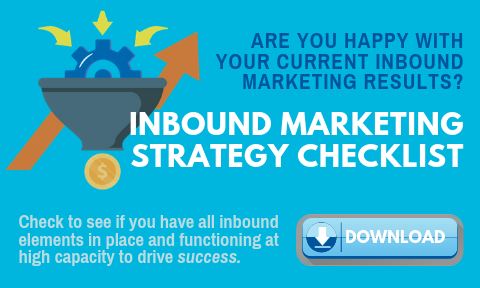4 min read
Beyond Branding: Leveraging Social Media to Drive Leads
 Elissa Blankenship
:
April 24, 2023
Elissa Blankenship
:
April 24, 2023


How do you get social media right in B2B organizations?
There are several ways to use social media effectively to drive new business. These include things like identifying your target person, establishing a strong presence on the right platforms, and continuously sharing valuable content.
6 Ways to Use Social Media Effectively To Drive New Business
1. Identify your target persona: It's important to understand who you are trying to reach on social media. This will help you determine which social media platforms to use and the type of content to share.
2. Establish a strong presence on the right platforms: Choose the social media platforms that are most popular among your target audience and focus your efforts there. This will help you reach the right people and increase your chances of generating leads.
3. Share valuable content: B2B sales organizations can use social media to share valuable content that helps educate and inform their target audience. This could include blog posts, whitepapers, infographics, and case studies.
4. Engage with your audience: Social media is a great way to connect with potential customers and build relationships. Make sure to regularly engage with your followers by responding to comments and messages and asking for feedback.
5. Use social media advertising: Social media advertising allows you to target specific audiences and can be an effective way to generate leads and drive new business. Make sure to use well-designed ads and track your results to see what works best.
6. Integrate social media with your overall sales strategy: Make sure to integrate your social media efforts with your overall sales strategy. This might involve using social media to nurture leads through the sales funnel or using it as a way to stay in touch with past customers and encourage repeat business.
What Are The Best Tools For A B2B Organization To Use To Manage Social Media?
Several tools can be useful for a B2B organization to manage its social media presence. Some popular options include:
1. HubSpot: We consider HubSpot one of the best social media management tools because it monitors all interactions on LinkedIn, Facebook, Twitter, and Instagram accounts. It also monitors audiences and allows you to target specific audiences with personalized messaging. Learn more below.
2. Hootsuite: This is a social media management tool that allows you to schedule and publish content, engage with your followers, and track your performance. It also offers analytics and reporting features to help you understand the impact of your social media efforts.
3. Buffer: This is another social media management tool that allows you to schedule and publish content, as well as track the performance of your posts. It also has a feature called "Pablo" that allows you to create social media graphics.
4. Sprout Social: This is a comprehensive social media management platform that offers a range of features, including scheduling, analytics, and customer relationship management (CRM) tools. It also has a feature called "Smart Inbox" that allows you to manage all of your social media messages in one place.
5. SocialFlow: This is a tool that uses artificial intelligence (AI) to optimize the timing of your social media posts to maximize engagement. It also offers analytics and reporting features to help you track the impact of your social media efforts.
6. CoSchedule: This is a social media management tool that integrates with your calendar to help you plan and schedule content. It also has features for collaboration, analytics, and social media analytics.
It's important to choose a tool that fits your organization's specific needs and budget. It might be helpful to try out a few different options to see which one works best for you.
How HubSpot Social Media Tools Can Work For An Organization
Note: A division of CSS, LeadG2 is a HubSpot Diamond Partner. HubSpot is a comprehensive marketing and sales platform that includes a range of social media tools to help organizations manage and optimize their social media presence. Some of the features of the HubSpot social media tools include:
-
Social media scheduling: You can use the HubSpot social media tools to schedule and publish content to multiple social media platforms, including Facebook, Twitter, LinkedIn, and Instagram.
-
Social media monitoring: The tools allow you to track mentions of your brand and keywords across social media platforms and respond to comments and messages.
-
Social media analytics: You can track the performance of your social media posts and get insights on how your content resonates with your audience.
-
Social media advertising: You can use the tools to create and manage social media advertising campaigns and target specific audiences.
-
Social media integrations: The tools integrate with other parts of the HubSpot platform, including the customer relationship management (CRM) and marketing automation tools. This allows you to manage all your social media interactions in one place and track the impact of your social media efforts on your overall marketing and sales efforts.
Overall, the HubSpot social media tools can help organizations streamline their social media management, engage with their audience, and track the impact of their efforts.
Best Social Media Practices For Executives To Enhance Their Brand
-
Choose the right platforms: Identify the social media platforms where your target audience is most active and focus your efforts there.
-
Develop a consistent brand voice: Make sure to use a consistent tone and style across all of your social media channels. This will help to build trust and establish your brand's unique identity.
-
Share valuable content: Use social media to share valuable content that is relevant to your target audience. This could include blog posts, articles, infographics, and videos.
-
Engage with your audience: Social media is a great way to connect with your audience and build relationships. Make sure to regularly engage with your followers by responding to comments and messages, and asking for feedback.
-
Monitor and manage your online reputation: It's important to regularly monitor your social media channels and respond to any negative comments or reviews. This can help to protect your online reputation and maintain a positive brand image.
-
Be authentic: It's important to be genuine and authentic on social media. Avoid using generic or automated responses, and make sure to share your personal thoughts and experiences.
-
Protect your privacy: Make sure to set appropriate privacy settings on your personal social media accounts and be mindful of what you share online. This will help to protect your personal brand and reputation.

How to Build a Social Media Strategy for Your Business
Social media is an essential piece of your inbound marketing strategy. Once you’ve created valuable content, social media is a great way to deliver...

1 min read
A Simple Hack to Generate More Traffic (Without Spending More Money)
I'm starting today's blog post off with a few stats: 74% of B2B buyers choose a company that is first to help them with useful content 50% of B2B...
.png?width=2250&height=647&name=LeadG2-logo_(2).png)



